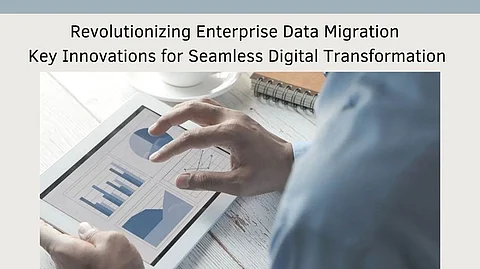

In this rapidly growing digital era, data migration has become a critical component of enterprise transformation. However, many organizations still face inefficiencies, security concerns, and system disruptions during transitions. In a recent study, Suresh Kumar Somayajula explores innovative approaches that are reshaping large-scale enterprise data migration. His findings provide actionable insights into successful strategies that minimize risks and enhance performance and cost efficiency.
The robust innovations in enterprise data migration have been developed in a structured way into a three-phase approach through which the organizations complete migrations in a much faster 40% as compared to the traditional methods. This structured approach consists of pre-migration assessment, phased execution, and post-migration optimization. Such staging defines steps clearly and gives ways to advance enterprise risk management and transition planning.
In corporate data migration, security is always the foremost area of concern, particularly for organizations dealing with sensitive information. Research has indicated that the organization with a zero-trust architecture would improve security posture by 89% and decrease security incidents by 76%. It verifies every data access request to ensure there are fewer and fewer attempts of unauthorized access while preserving impressive data integrity at 99.99% throughout the migration process.
As the primary cause for delays and prolonged data reconciliation effort, manual validation processes typically suffer from lengthy downtime. In contrast, organizations benefitting from the use of automation validation frameworks typically observe a 65% decrease in post-migration reconciliation effort. Leveraging AI quality checks and real-time validation, the frameworks maintain data accuracy that is better than 99.95% while shortening timelines related to the entire migration run.
Moving to cloud-based platforms, enterprises will have to restructure their migration plans according to the foundation's benefit on the cloud. According to the study, resource utilization improves by 45 percent, with at the same time costs cut down by 37 percent. These include dynamic resource allocation, multi-cloud architecture planning, and automated scaling mechanisms, all of which improve the overall performance of the system.
An unscheduled downtime and unplanned service interruptions are the gravest concerns concerning enterprise data migration. Companies adopting rolling migration approaches will report an impressive 78 percent reduction in critical service disruptions. Such an approach involves a gradual workload migration while key business functions run optimally so that the migration will function well with no consequences for end-users.
Easily one of the biggest hassles affecting most data migrations has to do with dependencies across various legacy systems. With the advent of AI-powered discovery tools for dependencies, 92% accuracy has been achieved regarding their capabilities in mapping complex relationships among systems. Enterprises that proactively identify integration points and system boundaries are reducing the rate of failure in integration by 71% of the time taken for migration completion by 43%.
A critical factor in successful data migration is the ability to anticipate and mitigate potential risks before they impact operational systems. Research indicates that thorough pre-migration assessments identify 82% of data discrepancies, reducing remediation costs by 59% and minimizing compliance risks by 73%. This proactive approach ensures a more predictable and controlled migration process.
Inherently, a successful data migration depends on anticipating and resolving potential risks before such risks become apparent in the operational systems. Studies show that performing an extensive pre-migration survey allows for the identification of 82% of data discrepancies, thus resulting in a decrease of treasures for remediation by 59% and reducing further compliance risks by 73%. Therefore, this ensures that the migration process can be controlled more predictably and with more defined actions.
Compliance requirements are continuously evolving, making it essential for organizations to integrate regulatory considerations into their migration plans. Automated compliance monitoring tools help reduce regulatory violations by 94%, ensuring organizations stay ahead of legal and security requirements throughout the migration lifecycle. These frameworks generate real-time alerts, allowing immediate corrective actions to be taken before issues escalate.
Enterprise data migration has evolved beyond a mere technical process; it is now a critical strategic initiative that shapes an organization's future scalability, agility, and resilience. A well-executed migration ensures seamless data transitions while minimizing risks, disruptions, and compliance issues. By leveraging advanced technologies such as zero-trust security models, automated validation, AI-driven integration mapping, and compliance-centric strategies, enterprises can significantly enhance efficiency, reduce costs, and improve data integrity. These innovations not only streamline migration workflows but also fortify cybersecurity, ensuring data remains protected throughout the transition. Ultimately, businesses that embrace these advancements gain a competitive edge in digital transformation.
In conclusion, Suresh Kumar Somayajula's insights provide a valuable roadmap for organizations navigating complex migration landscapes. With rapid advancements in technology, businesses that embrace these innovations will be better equipped to manage their data transitions seamlessly, securely, and cost-effectively.
